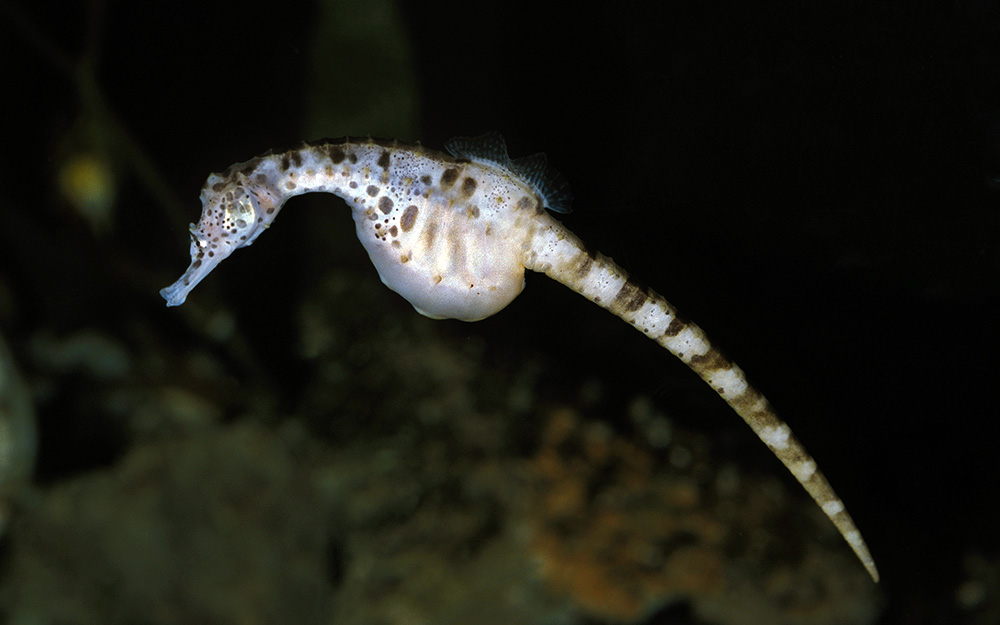Big-belly seahorse
(Hippocampus abdominalis)

Classification
General data
The big-belly seahorse (Hippocampus abdominalis) or pot-bellied seahorse is one of the largest seahorse species in the world, with a length of up to 35 cm (14 in), and is the largest in Australia. Seahorses are members of the family Syngnathidae, and are teleost fishes. They are found in southeast Australia and New Zealand, and are listed on Appendix II of CITES.
The big-belly seahorse has a forward-tilted, a long-snouted head, a distended but narrow pot belly, and a long, coiled tail. It swims using its dorsal fin with a vertical stance; when not swimming, it coils its prehensile tail around any suitable growth, such as seaweed, waiting for planktonic animals to drift by, when they are sucked up by the small mouth set at the tip of the snout much like a vacuum cleaner. Seahorses are voracious feeders, eating mainly crustaceans, such as shrimp, and other small animals living among the seaweed, such as copepods and amphipods. They do not chew, so they can eat to excess because of their small gut tract. Each eye moves separately, making it easier for them to see food and predators.
Distinguishing males from females is easy: The male has a smooth, soft, pouch-like area at the base of its abdomen where the stomach meets the tail on the front side. Males also have a fin there, but it is less obvious. The female has more of a pointed stomach with a very obvious fin at the base of it.










